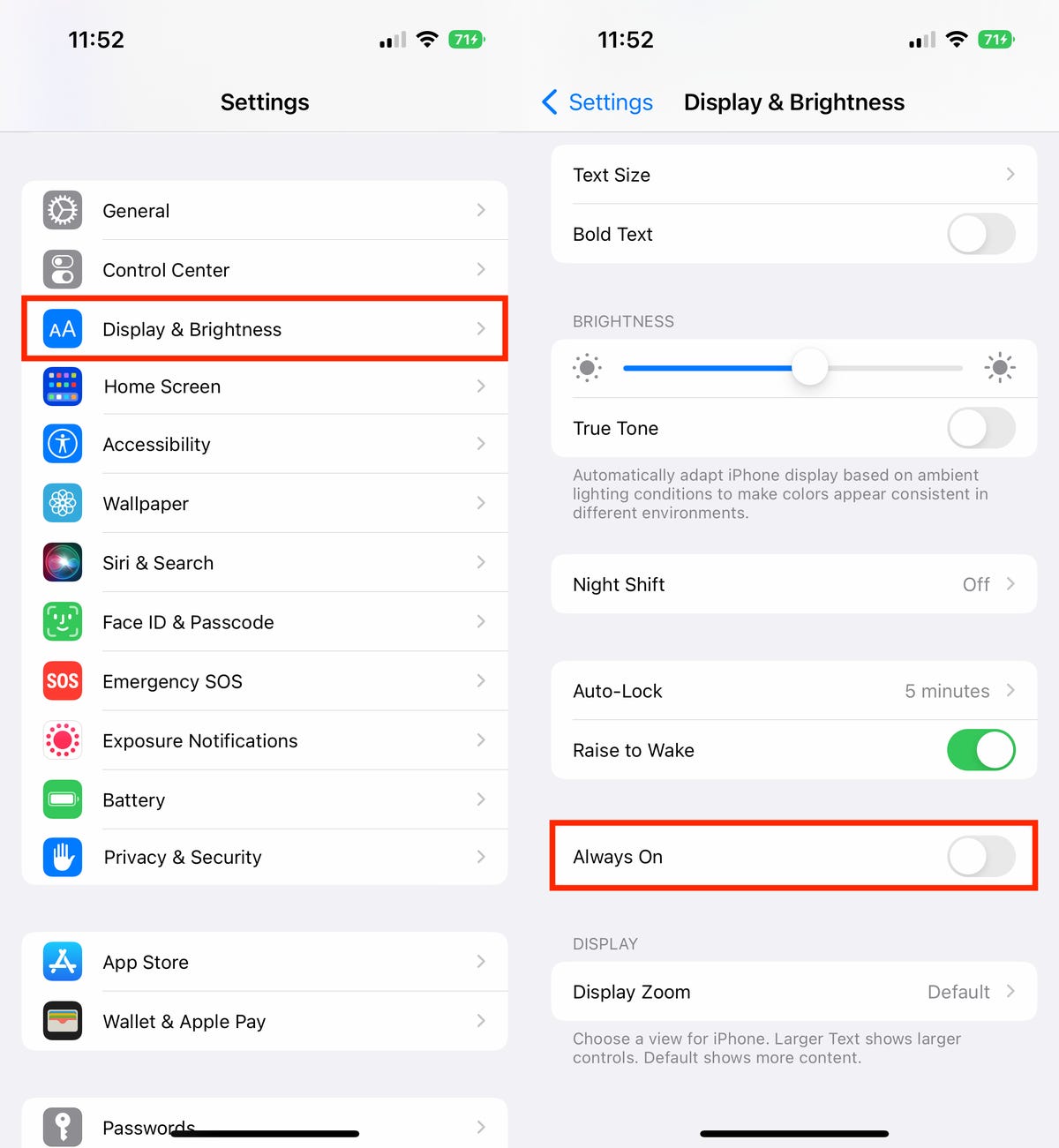How to Turn off iPhone Screen Saver, go to Settings > Display & Brightness > Auto-Lock, then select “Never.” This disables the screen saver.
IPhones come with a variety of customizable features, including the screen saver or Auto-Lock function. This feature is designed to save battery life by automatically dimming and locking the screen after a certain period of inactivity. While useful, there are times when you might want your screen to stay on continuously, such as during presentations or extended reading sessions.
Disabling the screen saver is a straightforward process that can be done in a few simple steps. This guide will help you understand how to easily turn off the screen saver to suit your needs.
Locating The Settings App

How to Turn off iPhone Screen Saver?
Turning off your iPhone screen saver can help save battery life and keep your phone running smoothly. Whether you are learning how to turn off the iPhone screen saver or need specific instructions for how to turn off the screen saver on iPhone 15, the first step is locating the Settings app. This guide will walk you through accessing the Control Center and navigating to the Settings app.
Accessing The Control Center
The Control Center is a convenient way to access various iPhone features quickly. To begin the process of turning off your screen saver, follow these steps:
- Swipe Down: On an iPhone with Face ID, swipe down from the top-right corner of the screen. On an iPhone with a Home button, swipe up from the bottom edge.
- Look for the Settings Icon: The Control Center includes various shortcuts, but you won’t find the Settings app here. Instead, use it to quickly adjust brightness or other features.
Although the Control Center itself doesn’t house the Settings app, it provides quick access to several important controls. This can be useful while navigating your phone. Here’s a quick table for reference:
| Action | Gesture |
|---|---|
| Access Control Center | Swipe down from top-right (Face ID) or swipe up from bottom (Home button) |
| Adjust Brightness | Use the brightness slider |
Navigating To The Settings App
Once you are familiar with the Control Center, it’s time to locate the Settings app to turn off the screen saver:
- Find the Settings Icon: Look for the grey gear icon labeled “Settings” on your home screen.
- Tap on Settings: Open the Settings app by tapping the icon.
- Scroll Down: Scroll down until you see the “Display & Brightness” option.
To turn off the screen saver on your iPhone 15 or any other model, follow these steps:
- Open the Settings app.
- Tap on Display & Brightness.
- Find the Auto-Lock option and tap it.
- Select Never to disable the screen saver.
By following these steps, you will easily learn how to turn off the iPhone screen saver. This method ensures that your phone stays active as long as needed.
Disabling The Screen Saver
Understanding how to turn off the screen saver on your iPhone can enhance your user experience and save battery life. Whether you have an iPhone 13 or an iPhone 11, the steps are simple and straightforward. Disabling the screen saver involves changing a few settings on your device to prevent the screen from dimming or locking automatically. Let’s delve into the specifics.
Selecting The Display & Brightness Option
To start, open the Settings app on your iPhone. This app is represented by a gear icon and is usually found on your home screen. Once you are in the Settings menu, scroll down and tap on Display & Brightness. This section allows you to adjust various aspects of your screen, including brightness and screen saver settings.
In the Display & Brightness menu, you will find several options:
- Brightness Slider: Adjust the brightness of your screen to your preference.
- Dark Mode: Switch between light and dark themes.
- Night Shift: Reduce blue light emissions during the night.
- Auto-Lock: Set the time before your screen locks automatically.
The Auto-Lock option is crucial for disabling the screen saver. By default, iPhones are set to lock the screen after a few minutes of inactivity to save battery. To turn off the screen saver, you need to adjust this setting.
Turning Off The Auto-lock Feature
After selecting Display & Brightness, find the Auto-Lock option. Tap on it to open a new menu with time intervals ranging from 30 seconds to 5 minutes, including an option for Never. Selecting Never will prevent your screen from locking automatically.
Follow these steps to turn off the Auto-Lock feature:
- Open the Settings app.
- Tap on Display & Brightness.
- Select Auto-Lock.
- Choose the Never option.
This adjustment ensures your screen remains active until you manually lock it. This is particularly useful for extended use without interruptions. Be aware that setting Auto-Lock to Never can drain your battery faster, so use this setting wisely.
Whether you are learning how to turn off screen saver on iPhone 13 or how to turn off screensaver on iPhone 11, the process is identical. Following these steps will help you manage your screen saver settings efficiently.
Alternative Methods
Are you tired of your iPhone screen turning off too quickly? Learning how to stop the screen from turning off on your iPhone is essential for uninterrupted usage. While the default method involves diving into the settings menu, there are several alternative methods you can use. Discover how to turn off the screen saver on iPhone 14 using Siri and AssistiveTouch.
Using Siri To Turn Off The Screen Saver

Siri, your iPhone’s virtual assistant, can help you turn off the screen saver without having to navigate through the settings. Follow these steps to use Siri:
- First, activate Siri by saying “Hey Siri” or by holding the side button on your iPhone.
- Next, ask Siri to “Turn off Auto-Lock”. This command will direct Siri to open the Auto-Lock settings.
- Siri will then present you with the Auto-Lock settings screen. Choose the “Never” option to prevent your screen from turning off.
Using Siri is quick and efficient, especially if you’re in the middle of an activity and don’t want to fumble through menus. Here are some additional commands you can try:
| Command | Action |
|---|---|
| “Hey Siri, open Display settings” | Siri opens the display settings for you to adjust. |
| “Hey Siri, set Auto-Lock to Never” | Siri sets the Auto-Lock to Never directly. |
These commands can save you time and help you learn how to stop the screen from turning off on your iPhone with minimal effort.
Using Assistivetouch To Turn Off The Screen Saver
AssistiveTouch is another excellent feature for managing your iPhone’s screen saver settings. Follow these steps to use AssistiveTouch:
- Go to Settings on your iPhone.
- Navigate to Accessibility and select Touch.
- Turn on AssistiveTouch by toggling the switch.
- A floating button will appear on your screen. Tap it to open the AssistiveTouch menu.
- Select Device, then tap More.
- Choose Auto-Lock and set it to “Never“.
Using AssistiveTouch offers a more tactile approach to managing your settings. Here are some benefits of using AssistiveTouch:
- Convenient access to frequently used settings.
- Helps users with physical impairments navigate their iPhones more easily.
- Reduces wear and tear on hardware buttons.
AssistiveTouch is a versatile tool that can help you learn how to turn off the screen saver on iPhone 14 and enhance your overall user experience.
Conclusion
Turning off your iPhone screen saver is simple with these steps. Customize your settings to match your preferences. Enjoy a personalized and uninterrupted iPhone experience. Don’t forget to explore other iPhone features to enhance usability. Stay tuned for more handy tips and tricks to get the most out of your device.



